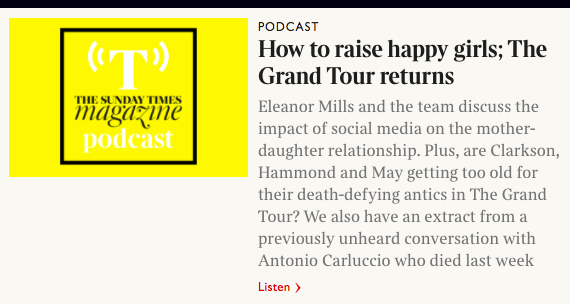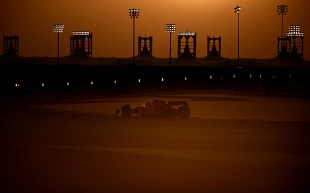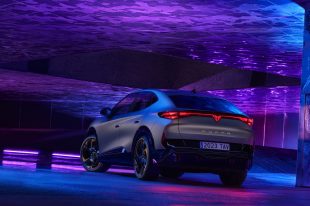Our year from hell: Clarkson, Hammond and May on The Grand Tour season 2, overcoming disaster, 'that' crash and ill-health
Exclusive: After an annus horribilis that left each of them in hospital, the terrible trio tell Nick Rufford about getting back on the road for their new Grand Tour
IN EPISODE one of The Grand Tour, second series, Richard Hammond drives up a Swiss mountain, skids at 120mph, somersaults through the air, then rolls downhill in a £1m car that, moments later, sets itself on fire. He crawls from the cockpit just before it’s consumed by flames.
The recording from the onboard microphone survived the inferno, even though the video was burnt to a crisp, so the screech of metal is painfully audible, as well as Hammond’s muffled noises. “I was upside down with a helmet and seatbelt, squashed up with a broken leg, saying, ‘Somebody will come and get me,’” he recalls. “Then I thought, ‘No, I really do need to get out now, a fire may have started.’”
Five months on, sitting in the Hampshire Hog, Grand Tour’s local in west London, Hammond has 10 pins and a metal plate holding his leg together. The injury will “go osteoarthritic pretty quickly”, doctors have warned, and he’s unlikely to run again (he was a keen sports runner). Ever sympathetic, Jeremy Clarkson and James May, his co-presenters, point out that the surgery left him “even shorter than before the crash”.
Browse NEW or USED cars for sale on driving.co.uk
Which says most of what you need to know about The Grand Tour. Do dangerous and daft things, cheat death, make fun of each other’s misfortunes. It flies in the face of the fashion for men to be sensitive, and it’s probably the reason the three still pull in viewers in 242 territories (none of them is sure how to define a territory, but it’s a lot of viewers). Maybe it’s also an antidote to CGI special effects, or TV presenters who are too cheery or earnest to be plausible.
Anyone who thinks Hammond “took one for the team” and staged the accident to boost ratings will change their mind after seeing the footage. It would be impossible to fake, even using a specially strengthened vehicle, let alone a lightweight electric car.
Question: what went wrong in Switzerland? Did Hammond simply — to use motor racing terminology — run out of road? “It’s more that he ran out of talent,” says Clarkson.
Question: in 2006, Hammond suffered a serious head injury when he lost control of a jet-powered car while filming. Is it coincidence that it’s Hammond who’s had two such close calls? “No,” says Clarkson. “It’s because he can’t see over the steering wheel.”
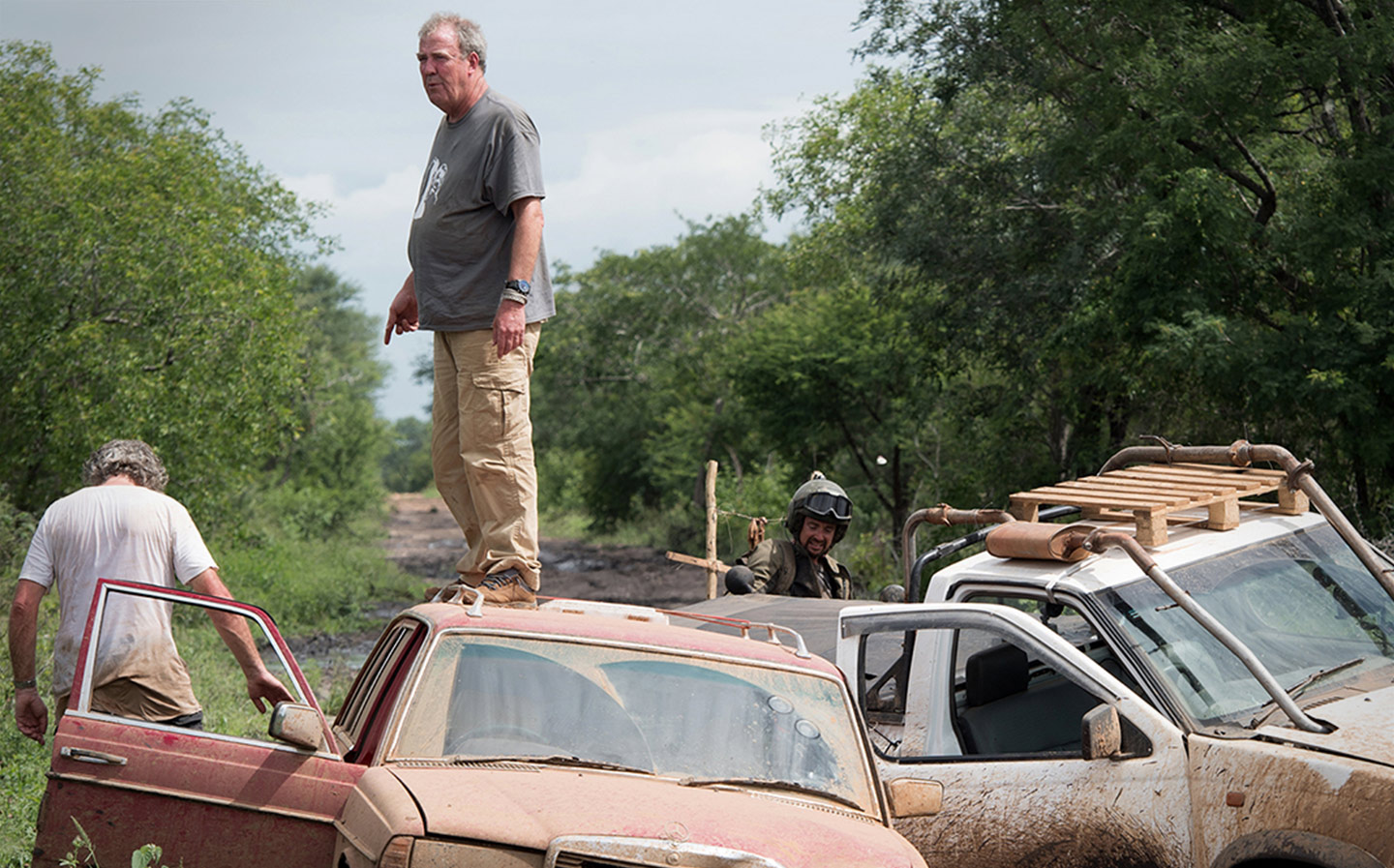
It’s clear none of the three presenters — not even May, the more thoughtful, eloquent one — is likely to give a straight answer. Because blokes don’t, especially in a pub. “You don’t say, ‘Oh, poor me, I was so unlucky,’” they observe.
An assortment of injuries and ailments has added up to an annus horribilis for all three, but that has simply provided grist for the mill. May was struck with a mystery infection that he says was “essentially very severe food poisoning”. He admits: “I wasn’t going to say anything until Clarkson blabbed about it. I had to remain under observation for three days and have things injected into my arm — elaborate antibiotics, quite strong ones.”
May says the doctors who treated Clarkson — “and this has been confirmed by medical science” — isolated the prat virus
Clarkson was struck down with pneumonia and a collapsed lung while on holiday, which traumatised him into giving up smoking. Hammond says it was an elaborate hoax. Does anyone really believe that Clarkson got pneumonia while sunbathing in the Mediterranean, he asks, not unreasonably. Or, adds May, that he needed to recover in a luxury villa and cruising on a yacht?
May says the truth is that doctors who treated Clarkson — “and this has been confirmed by medical science” — isolated the prat virus. “It turns out he’s had it all along,” he sighs. Clarkson retaliates by pointing out that while he managed to be hospitalised in a beautiful part of Mallorca, and Hammond was treated in a top Swiss clinic, May ended up on a ward in unglamorous Earls Court, west London.
Adding to their personal problems, or perhaps even causing them, were the challenges thrown up by the globetrotting format of The Grand Tour, a show salvaged from the wreckage of Top Gear, which itself crashed in flames after Clarkson socked a producer in 2015. The BBC owned the intellectual property to almost everything that made Top Gear popular — the Stig, Star in a Reasonably Priced Car, the Cool Wall. The three, plus Andy Wilman, the executive producer, were left with nothing except what Wilman calls “three men in a shed talking about cars”.
To get round the problem, they came up with the idea of a travelling studio that would pitch up in countries where they could still rely on enthusiastic support. Top Gear was watched by 300m viewers around the world, many of whom were furious at the BBC for closing their favourite British export. So a plan was hatched to film the show in front of local audiences in places such as the Mojave desert in California and South Africa’s Cradle of Humankind.
The idea turned out to be overambitious and, a year on, it’s been consigned to the scrapheap. One problem was the logistics of moving two giant tents between locations — leapfrogging to keep pace with the schedule. Then there was the “Star Wars” scale and complexity of equipment required for filming, and editing, in 4K — the high-resolution format that adds to the show’s realism. The cost nearly broke the budget, and the effort nearly broke the presenters. Hammond doesn’t blame jet lag for his accident but it may have had something to do with it.
Worst of all, says Clarkson, was that they could no longer get A-listers to appear on the show because their tent studio was always in some far-flung place. Even if they did, the celebrities couldn’t vie with each other as they had done on Top Gear, when their circuit times of a Surrey test track were recorded on a leader board. “If you were in the middle of the wilderness in South Africa, or the Californian desert, or Stuttgart, or the snowy wastes of Finland, they couldn’t compete,” says Clarkson. So the tent has been given a new, fixed location in the Cotswolds where “now they can”.
“Prince Harry once appeared on Top Gear but nobody knew about it and if I tell you which film, I’ll be beheaded”
The show has a new test track in Enstone, which is, conveniently, in the back garden of Clarkson’s farmhouse. Or as close as dammit. He admits the location is only “a short walk in my dressing gown” but denies, to snorts of derision, it was chosen for his personal convenience. “They think it’s all to do with me but it isn’t,” says Clarkson. “It is halfway between May’s house in Hammersmith and Hammond’s in Herefordshire. It’s so they can’t squabble.”
But weren’t there planning problems when he tried once before to use the Enstone track, back in Top Gear days? Clarkson says: “I think there were eight complaints. The papers said people were up in arms, but [the opposition] was microscopic. When you think about it, hotels, restaurants, tow companies will benefit from us being there.” The noisier testing of fast cars will continue to be done in Wiltshire at RAF Wroughton, wickedly nicknamed “the Eboladrome” because the track resembles the shape of the deadly virus.
Less popular segments from the first series such as Celebrity Brain Crash (where stars were killed off before they could appear — Jeremy Renner’s parachute failed to open, Armie Hammer was bitten by a rattlesnake) have been dropped, as has the redneck driver — “the American” — who succeeded the Stig. A string of new guests (“top people”) are lined up. They will do stuff with cars, but no one will say what, or who.
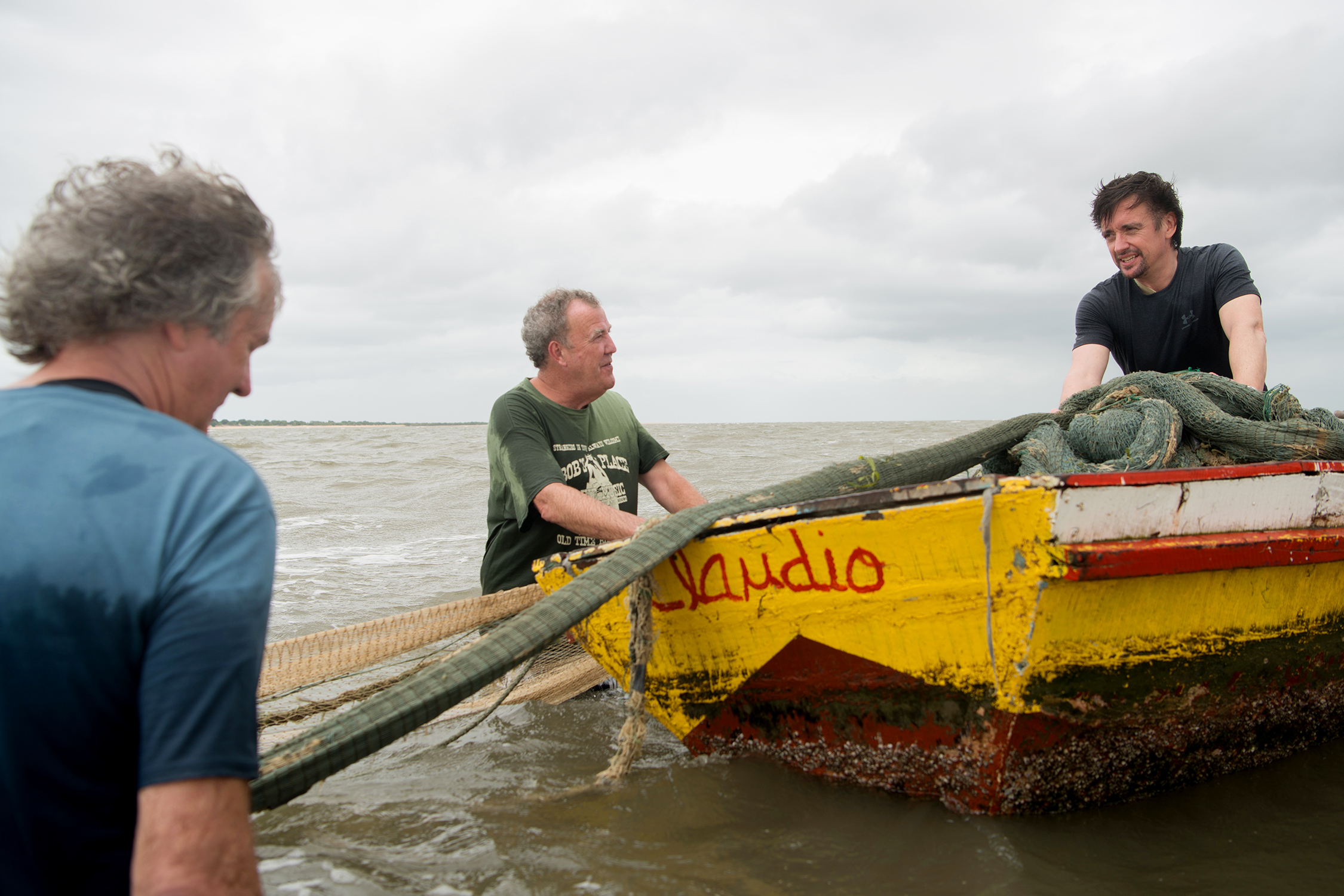
Wilman sidesteps the question, fearing he’ll spook the celebrities and they’ll cancel. Who does he hope will appear? “Prince Harry. He once appeared on Top Gear. Nobody knew. He turned up at the track one day when we were filming. He was standing around having a cup of tea and Jeremy said, ‘You can get in that car and drive.’ He was really good but if I tell you which film, I’ll be beheaded. I’d like Tom Cruise back because he was such a daredevil with his driving. I want Ryan Reynolds because he’s so funny. The Dalai Lama — a massive car enthusiast. We tried and we got a reply — a lovely handwritten letter — saying it wasn’t quite for him.”
The show’s new format and location — a ramshackle collection of production offices near an old airfield in the English countryside, with celebrities doing things in cars — take the formula far closer to their days at the BBC. Isn’t that what the Grand Tour team was keen to avoid, because of the legal risk of duplicating Top Gear? Wilman shakes his head. “We’ve done — what do you call it? — due diligence,” he says.
If nothing else, the changes could help restore the show’s Britishness, a quality diluted when it went on the road, and which, paradoxically, was missed by the very overseas audiences the presenters travelled to. Of course, it won’t be the same as when the three worked for “Auntie” Beeb, whose finger-wagging compliance committee provided the ideal foil for their humour, and which was forever investigating lapses in taste (“Such as Clarkson’s clothes,” Hammond points out).
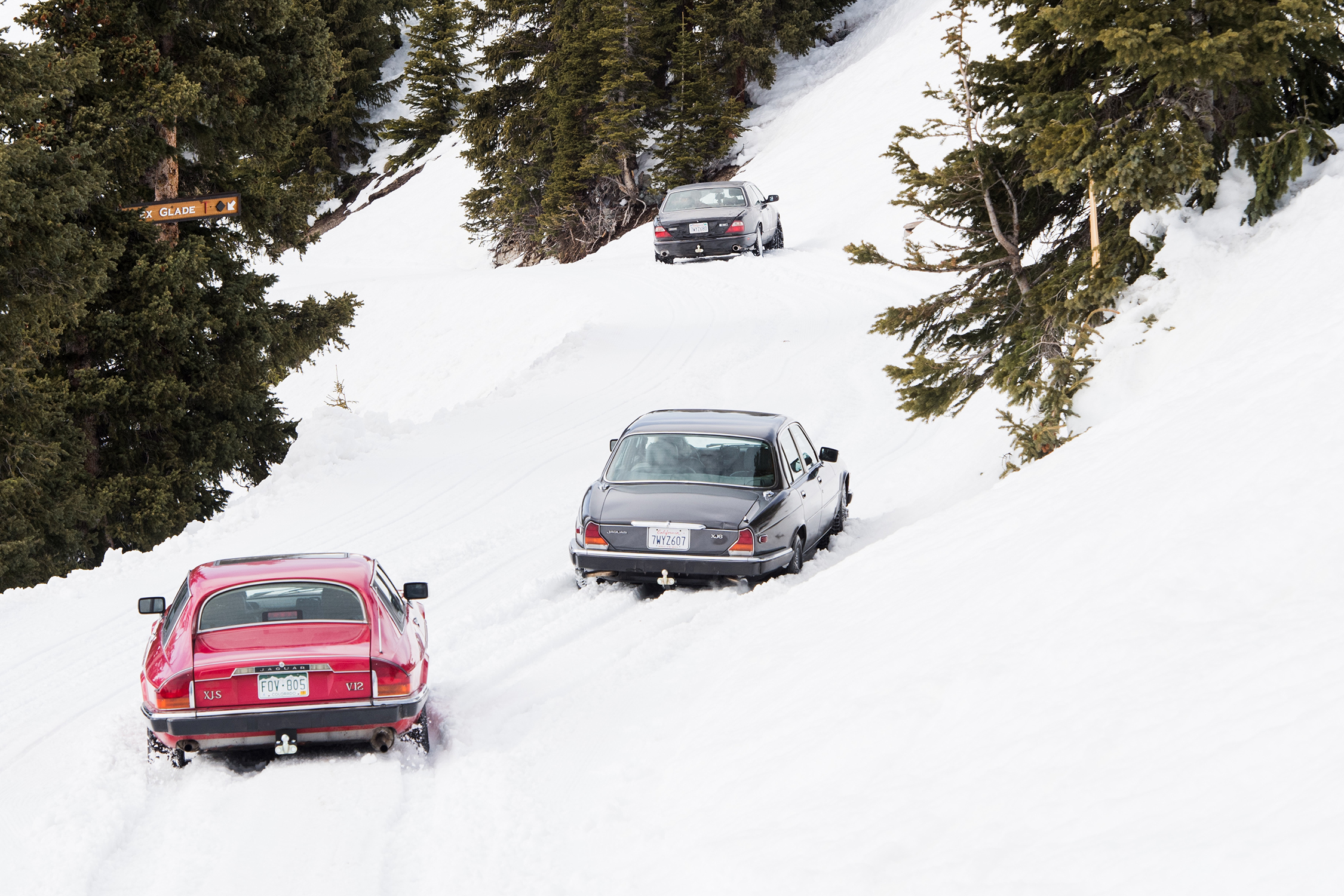
“The BBC is a fabulous organisation — it’s brilliant,” Clarkson reflects. “Having said that, I’m struggling to think of a single thing I miss. The people I work with are the same. The crews are exactly the same.”
Having a fixed location may also slow the haemorrhaging of cash. The costs of the first series were “massive” according to Wilman, though accounts from Chump Holdings, their production company, reveal they made a profit of almost £7m to the end of 2016. The company’s 28 staff were paid £3.3m, an average of £118,000 each. “I can put my hand on my heart and say the money goes on screen, rather than in our pockets,” Wilman insists. “We shoot in 4K. That seems like a detail but the costs are ridiculous. I can’t give out budget figures. It’s more than Top Gear was, but it’s less than what was quoted in the newspapers.”
There are murmurings some viewers drifted off after the first few episodes and the show’s popularity took a dive. If that’s the case, it’s not in evidence at the new Cotswolds HQ. On the day after the interview, there’s a press junket to see the new studio. A coach arrives with journalists from America, Italy and France. There’s even a TV reporter from India, where the Grand Tour was censored because of Clarkson’s use of “cow organs” to make a car. If anything, the internet has extended the trio’s reach. It’s hard to be sure, because, while terrestrial broadcasters must reveal viewing figures, internet companies such as Amazon and Netflix do not.
One dubious honour is that The Grand Tour has become the most illegally downloaded television show in history. Industry figures suggest the first episode was downloaded illegally 7.9m times, the second 6.4m times and the third 4.6m times. Amazon lost an estimated £3.2m in subscriptions from viewers who should have paid an annual £79 to sign up to its streaming service. Being square pegs in round holes themselves, the Grand Tour team can’t quite bring themselves to condemn the pirates. “It f**** off [Amazon founder] Jeff Bezos massively,” says Wilman with a grin.
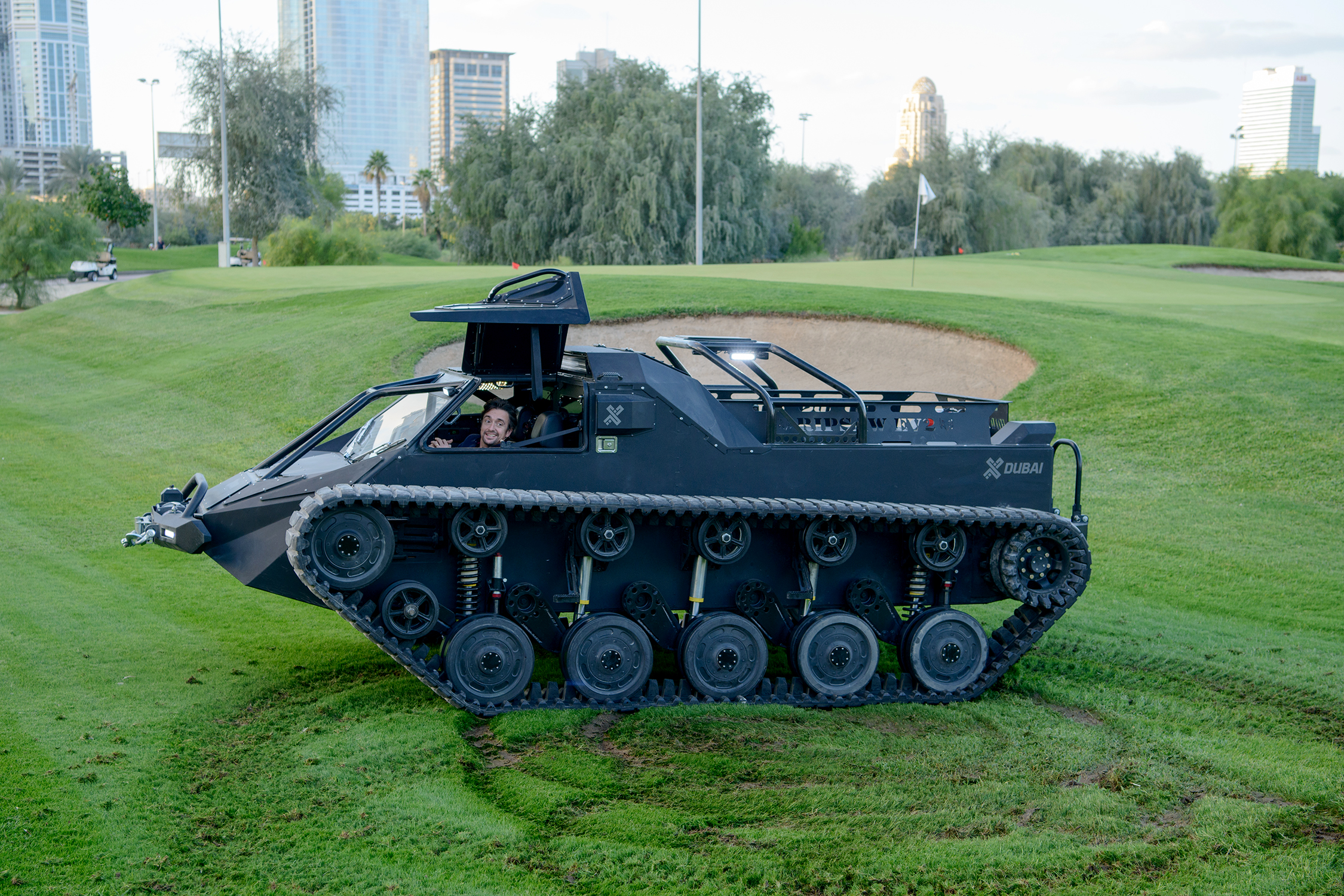
The main challenge for the second series has been coming up with new ideas. The presenters have been together approaching 15 years (James May — aka Captain Slow — joined Top Gear a year after the others but he always arrives late, says Clarkson) and fans are quick to recognise a stunt that’s been done before. “If you look at other format shows, like The Apprentice, they can do a variation of the same thing, because what changes are the characters,” says Wilman. “But we’ve got the same three characters, so we have to do different things, and that gets tougher, it really does.”
From excerpts, it looks as though the three have hit their stride after a first series that was said by some to be patchy. Clarkson races a modified 1970s Bond Bug car with a jet-ski engine and retractable wheels, setting a new amphibious speed record on Coniston Water, where Donald Campbell died in Bluebird.
Hammond also attempts a record — for a battery-powered vehicle on a hillclimb in Switzerland — with results the world knows about. In the end, the hillclimb record was won by the ambulance.
May takes public transport from New York to Niagara Falls in an attempt to prove that Clarkson’s £450,000 Ford GT supercar is useless on traffic-clogged roads. Unfortunately, May is delayed by having to take along an invalid. This is the three at possibly their old-style best: Clarkson forced to dawdle behind slow drivers in a 212mph car, an impatient May trying to make a serious point about trains, and Hammond in a wheelchair.
It’s likely, though, that the days of this sort of adventure are numbered. The storm clouds are gathering. If ill health doesn’t get them, then it will be new technology, political correctness or possibly lawyers. Will viewers want to watch presenters testing electric cars? Surely, they have more in common with kitchen appliances than the fire-breathing Lamborghinis and Ferraris of old? No, they insist. Electric cars feature in the new series. As well as the Rimac, crashed by Hammond, Jeremy tests a Tesla Model X (it will be interesting to see whether his review reignites a feud with Elon Musk, the Tesla owner, who unsuccessfully sued the BBC when Clarkson criticised the Tesla Roadster on Top Gear). Hammond says motoring presenters have to adapt: “We just need to evolve our language, as journalists. I can talk about the growl of a V8, or the howl of a V10, but how do you describe the sound of an electric car that has a motor on each wheel?”
Cupped ear. Silence. “Exactly!”
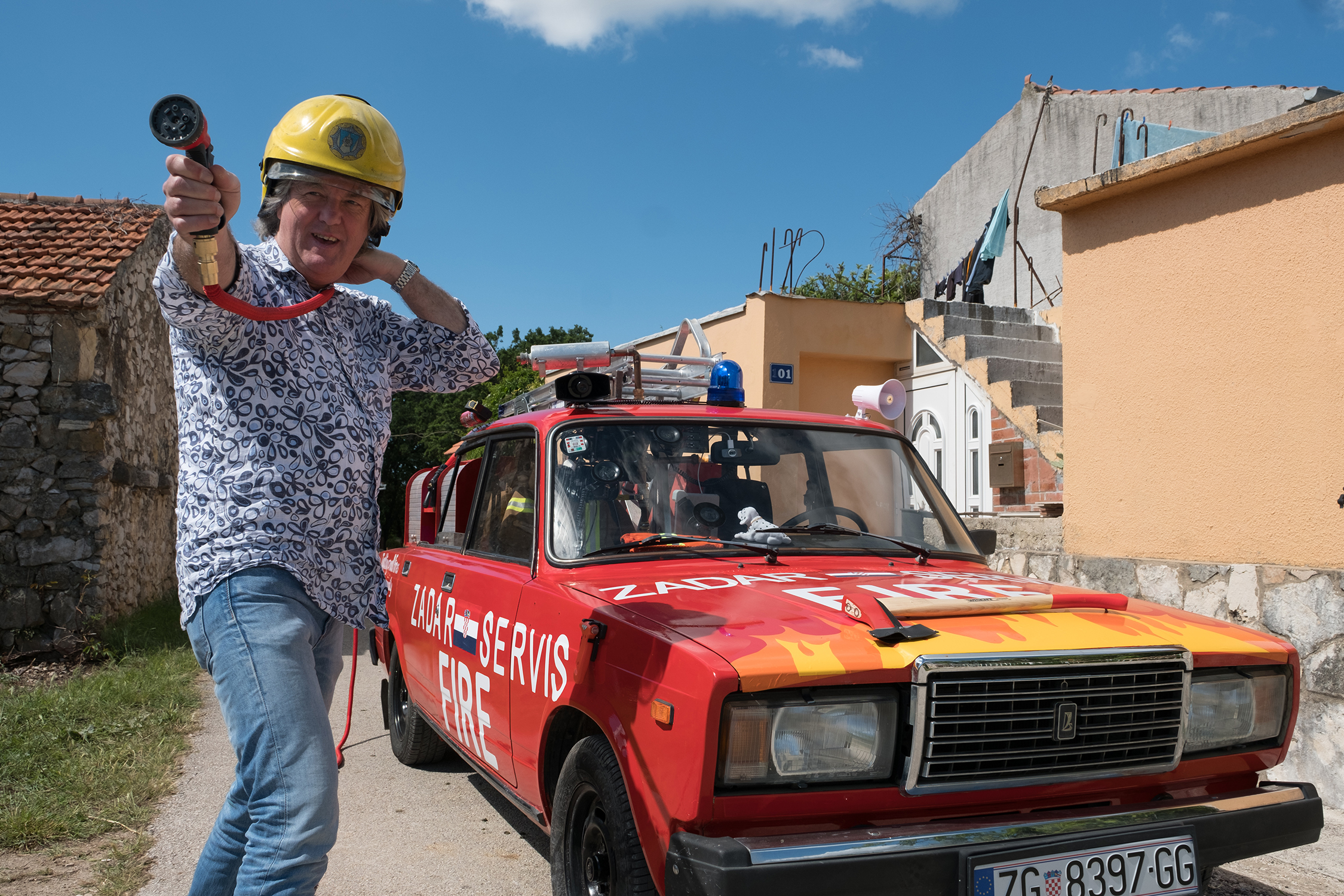
May thinks that predictions that we’re all about to switch to battery power are wide of the mark, even though the government has announced that from 2040 new cars won’t be allowed to run on just petrol or diesel. “If we’re saying we want all cars to be electric it will require a massive technical and cultural shift,” he says. “We’re only talking about 23 years ahead, and that’s not long. For one thing, we don’t have nearly enough charging points or power stations.”
What about self-driving cars? Surely they will spell the end for shows such as The Grand Tour? Clarkson shakes his head. “The technology isn’t ready. They’re not foolproof.” Yet the new Audi A8, equipped with self-driving capability, arrives next year. “[I’d say to] the chairman of Audi: you drive one of your driverless cars over the Death Road in Bolivia and I’ll buy one. Sit there with your hands folded and let it drive you up there, then squeeze past a lorry with half the tyre hanging over a 1,000ft drop while the car drives itself. Fine, I’ll buy it.”
Hammond attempts a record — for a battery-powered vehicle on a hillclimb in Switzerland — with results the world knows about. In the end, the hillclimb record was won by the ambulance
So could it be ill health that ends their run? Hammond says he’ll need a replacement knee before long — “obviously a carbon fibre one with all the trimmings”. Otherwise, his prognosis is good.
May and Clarkson claim they’ve made full recoveries. “I am a medical miracle, according to my lung specialist,” says Clarkson. “Not only is there no evidence I ever had pneumonia, there’s no evidence I ever smoked. I have better lung function than a fit 40-year-old. ”
So will it be lawyers who finally close the show? “No, because you can broadcast from anywhere using the internet,” says Clarkson. So they’d just move offshore to become a modern-day equivalent of Radio Caroline. This is how, I suspect, they see themselves — pirates of the airwaves (or streaming) — though they admit they would not last long cooped up on a boat. What would happen?
“Murder, probably.”
“And cannibalism.”
“Yuck,” says Hammond. “Yum,” says Clarkson.
As always, May considers the problem from all angles. “The best option in that situation would be to offer yourself to be eaten,” he says, honourably. “Then, I would no longer be troubled by Clarkson and Hammond. I certainly wouldn’t want to eat either of them. One bout of food poisoning was enough.”
Falklands War II and telling angry cyclists to smile
The trio share with Nick Rufford their most vivid TV memories and ideas for improving life on the move
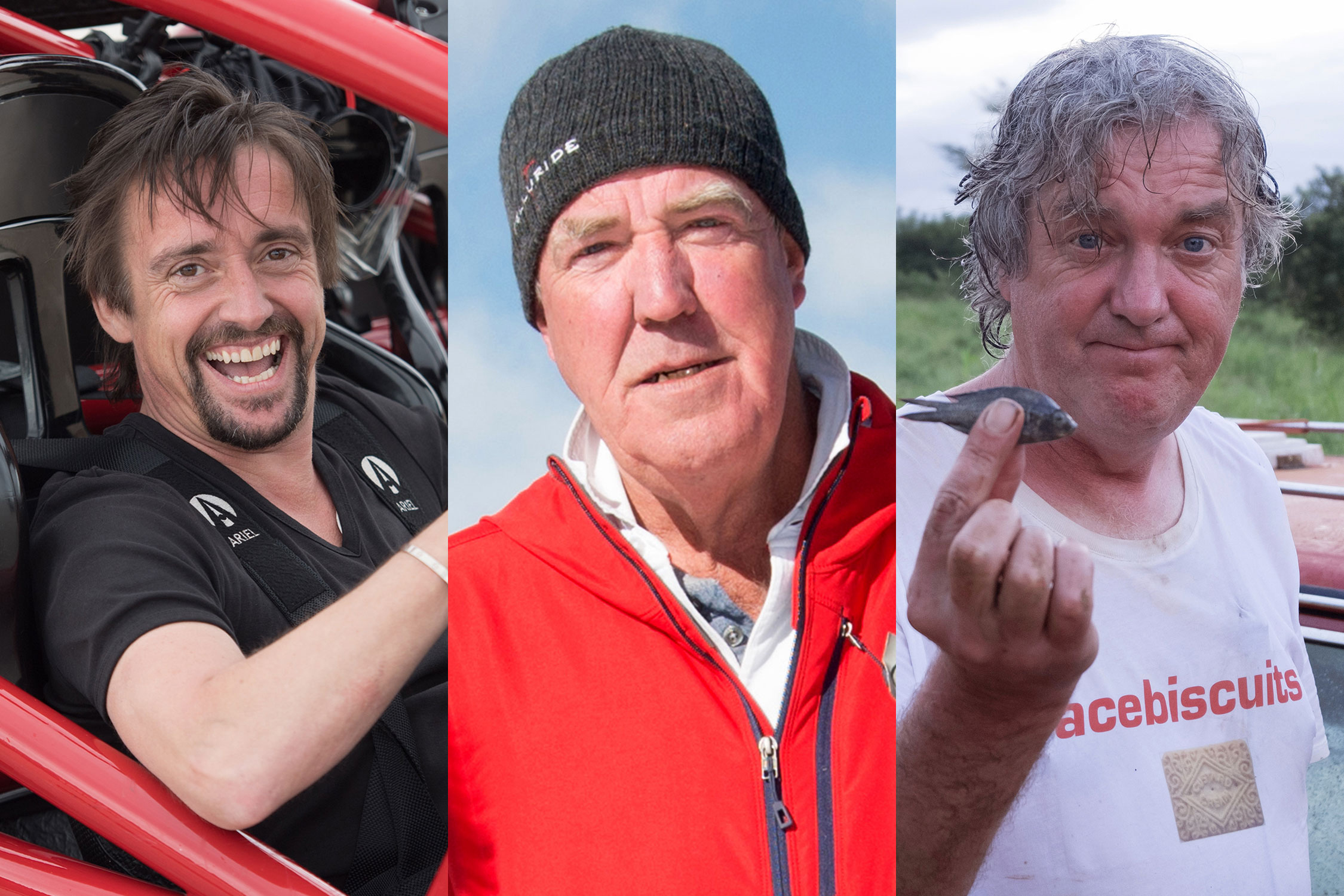
Richard “The Hamster” Hammond
- Age 47
- Most memorable moment Sitting by the road in Argentina, in that old Mustang I was in, looking at a sunset through a completely smashed windscreen [the presenters had been stoned by a mob who wrongly thought they were bragging about the Falklands War while filming the 2014 Top Gear Christmas special]. I took a photograph in my head.
- Transport policy Ask cyclists to smile. There seems to be a lot of fury out there. If it’s making them so cross, don’t do it.
Jeremy Clarkson
- Age 57
- Most memorable moment I was on the launch of the Citroën AX many years ago. I may have over-refreshed myself on the booze the night before. The next day I was to be a co-driver at a provincial rally. I sat belted into the passenger seat, with my grey face, feeling nauseous and thinking: “I’m not going to survive. This rally driver is going to show off because he’s got a reporter with him.” As the flag lifted, I heard this almighty bang and God himself had intervened by breaking the driveshaft.
- Transport policy Get rid of buses — the worst traffic pollution is from buses and lorries. And just tell everyone: if you can’t afford a car, get a bicycle. Like China. It’s what Jeremy Corbyn would make people do.
James May
- Age 54
- Most memorable moment Driving across a log bridge over a gully in the old Top Gear days. I went first to see if it would break, then Jeremy went across shouting very loudly, knowing that it wouldn’t.
- Transport policy Renationalise the railways. I know some people think everything must be a business and part of Dragons’ Den, but maybe they are actually a service. Is that a bit too left-wing?
What’s new in The Grand Tour Season 2? Executive producer Andy Wilman explains
We’re not afraid to say “that bit didn’t work”
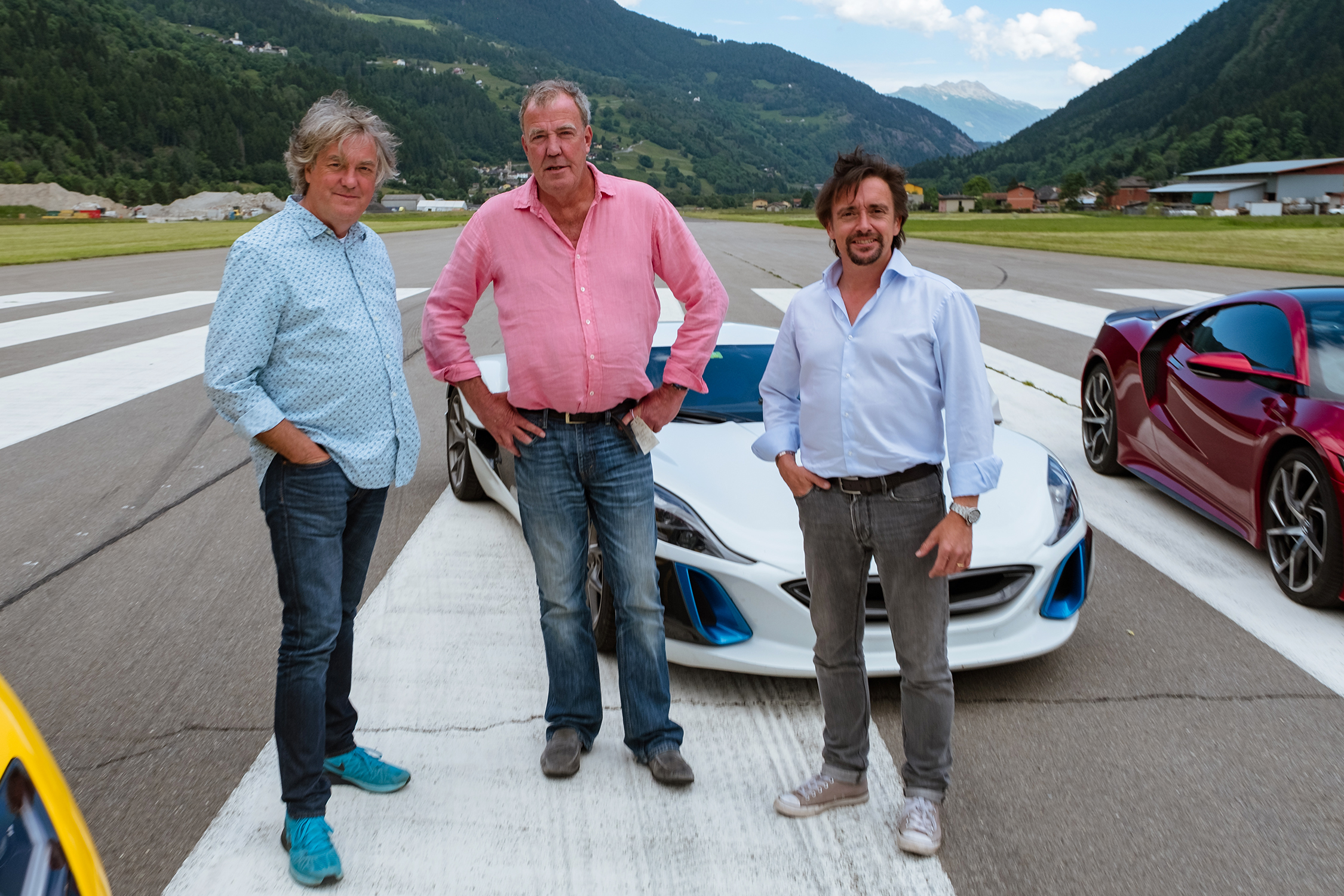
The next time I make a television show with three people in the line-up, I swear to God, it’s going to be Mo Farah, a vegetarian from California and a fitness DVD enthusiast. Davina, Mr Motivator — doesn’t matter — just as long as they can get out of bed in the morning and make it through a working day without the need for an ambulance.
You’ve already read about the medical mishaps of Iron Lung Man, Ant Man and Captain Botulism, so you’ll know what a scramble it’s been to get this second series together. But get it together we did, and we very much hope you enjoy this brand new 11-part series (plus a Christmas special).
Yes, there was some collateral damage. We weren’t going to get through this injury fest without it, and our big road trip special has been parked until we can get out and film it early next year. Fortunately, we accidentally shot a back-up one in Mozambique, which is a bit smaller than the full 90-minute extravaganza, but let’s not split hairs. It’s in an exotic location, tough situations are endured, the cars (and bike) are homemade stars, and hopefully you’ll enjoy watching it as much as we enjoyed making it.
Browse NEW or USED cars for sale on driving.co.uk
Besides installing a giant medicine cupboard, the other issue we had to deal with in making series two was deciding what changes to make. When we signed the original deal with Amazon back in 2015, we had just over a year to conceive a new show, think of some films to shoot, build a whole production team to turn ideas into pictures, and then shoot and edit everything. I know TV people can sound precious, but that is an insanely short amount of time for a task of that magnitude. We knew that not everything we tried would work.
Luckily, we do seem to have made a living out of ballsing everything up in public. We’re not that worried about admitting: “That bit didn’t work, so we’ll scrap it.” In this vein, the main change we are going to make is to stop taking the tent around the world. For this series, we’ve pitched it in one place. The Grand Tour element of the show is now concentrated much more around the films. We’ve found a spot in the Cotswolds, with a lovely Downton Abbey-type view out of the window for the Americans, and we’ve hammered the tent pegs in really hard.
Series one was a blast and a time for experimenting. In series two, Jeremy, Richard and James have really found their feet. Now all they have to do is stay on them.
The Grand Tour begins on Amazon Prime on December 8, with a new episode being released weekly
Jeremy Clarkson: why we had to delay The Grand Tour season 2 air date
Where in the world: the locations of The Grand Tour season 2
Read Jeremy Clarkson’s car reviews on driving.co.uk. This one, for example…


